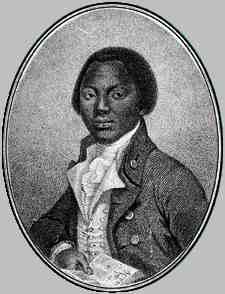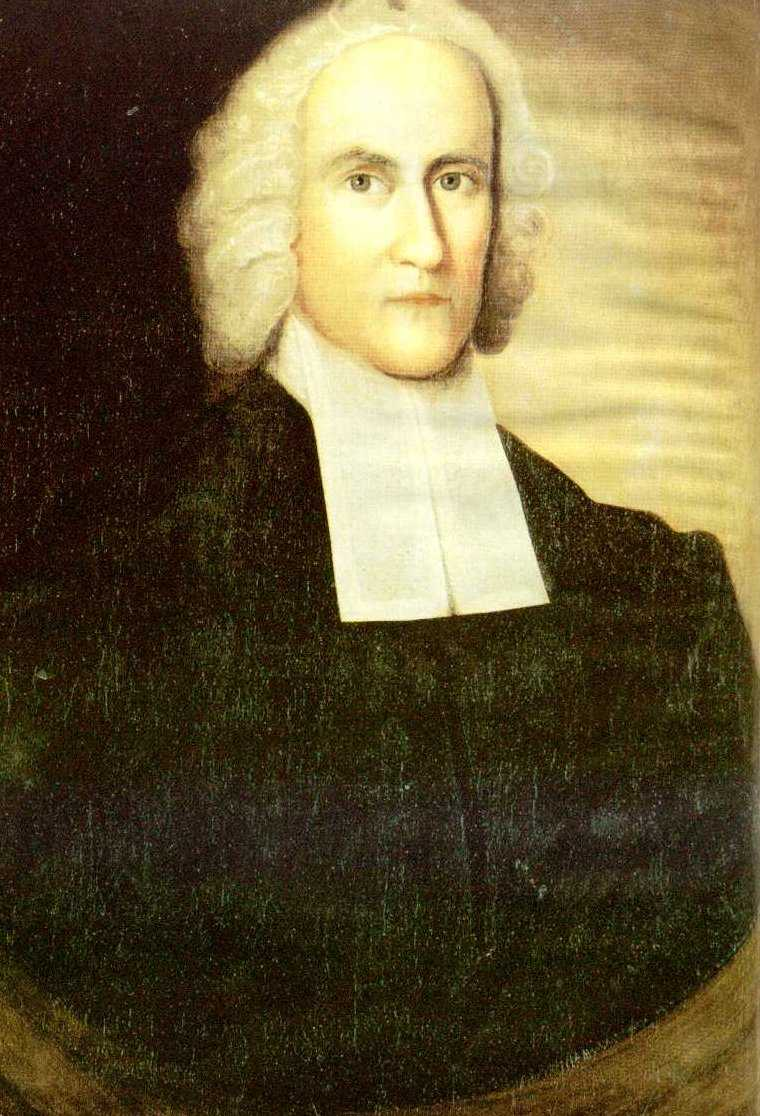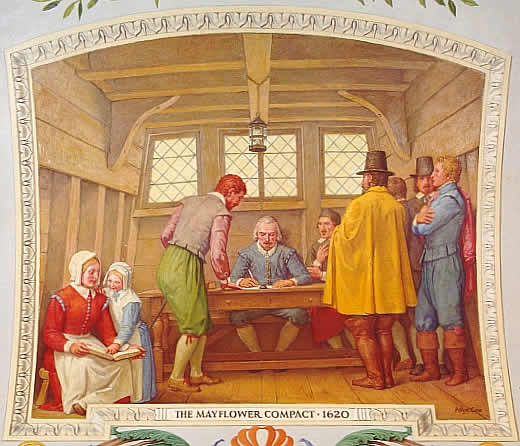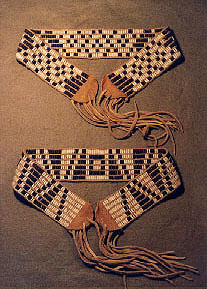|
|
|
|
|
Tuesdays 4-6:50pm Bayou 2230 Instructor: Craig White Office: Bayou 2529-8 Office Hours: M 2:30-6:30 and by appointment Phone: 281 283 3380 Email: whitec@uhcl.edu URL: http://coursesite.uhcl.edu/HSH/Whitec/LITR/4231 |
Assignments
midterm & research plan
(20-30%)
2 research posts
(30-40%)
final exam
(25-35%) |
Attendance policy: You are expected to attend every scheduled class meeting, but you are permitted two free cuts without comment or penalty. Attendance may not be taken systematically, but missing more than two meetings jeopardizes your status in the course. If you continue to cut or miss, you should drop the course. Even with medical or other emergency excuses, a high number of absences or partial absences will result in a lower or failing grade.
Course Objectives
Content
1. To learn about early North American and U.S.texts and cultures and make them matter now.
2. To read and interpret "Creation Stories" and "Origin Stories" of America
-
Native American origin stories
-
The Pilgrim or Puritan Fathers (& Mothers) of New England
-
Founding Fathers (& Mothers)
-
Genesis and Evolution
To explore the related concepts of utopia, decline, and apocalypse (or end-times)
3. Emergence of “Literature” as we know it today from earlier genres like letters, pamphlets, public documents; spoken and written literatures and cultures
4. Which America to teach?
-
"Founding" by "great white fathers" or multicultural voices of African America, Native America, Spanish and French colonization, women, and others?
-
To acknowledge “heroes, villains, and victims” but also cross-cultural, intertextual, evolutionary, and other stories
5. To gain literary and cultural knowledge of historical periods & attempt trans-historical unity:
-
Renaissance / Age of Exploration (1500s)
-
Seventeenth Century: Religious Reformation and Warfare (1600s)
-
Enlightenment, Age of Reason (late 1600s-late 1700s)
-
Romanticism (late 1700s-1800s) (continues in LITR 4232 American Renaissance, fall 2010)
6. To tell a single story? Trans-historical unity? Options:
-
Providential history: from "fate / destiny" to Biblical narratives, incl. models for secular story-telling
-
Evolution as continuity + change
-
Ongoing transition: tradition > modernity [>reaction: retrenchment & revival]
-
"Big ideas" or concepts for deep past: utopias,
Critical Theory / Critical Thinking
Close reading or formalism: attention to language and its mechanisms
Textuality & Intertextuality—not reading “one text at a time” but how texts create a network of shared meaning
Death of the Author: empowering readers, opposing autobiographical interpretations and "what the author meant to say"
Historicism: reading past literature in its historical context and ours
-
What aspects of the past do we relate to and why? If we don't relate, what can we learn from difference?
-
What is historical and what is timeless? If “timeless,” what is the connection between them and us?
-
How can we think of the past? What are mental powers of storytelling and limits to inclusion?
-
“History in their own words”—and not, say, in the language of a modern textbook
-
American Studies: the interdisciplinary study of American identity and culture in literature, history, religion, gender studies, and economics, whether dominant-culture or multicultural.
-
People may exploit the past to exploit people who know nothing of the past and have to believe what they hear.
Critical thinking:
unity & diversity: How to tell a continuous story about America that involves “other Americas?”
Teaching
Class Organization
Course webpage as evolving teaching tool
online texts for a face-to-face classroom
Student leadership of discussions
Attitudes
Build on what students already know (or may recognize or relate to)
Emphasis less on what to think than on how to think and discuss
Research posts as knowledge gathering + exams as opinion and analysis
Begin inclusion of Meso-America, Spanish colonization, and Hispanic / Mexican identities
Meeting and reading schedule
Spring 20
Tuesday, 19 January: course introduction
early European Exploration and Settlement
Tuesday, 26 January: Creation & Origin Stories of Europe, America, Africa
Readings:
The Interesting Narrative of Olaudah Equiano, the African (selections from chapters 1-3)
American Indian Origin Stories
Student Presentations
Discussion Leader: Alana Nesteruk
Poetry Reader: Sarah Wimberley
Poem: Simon J. Ortiz, "A New Story"
Discussion questions:
Intertextuality: What resemblances b/w Columbus & Genesis? With Handsome Lake?
About "Creation Stories," what advantages to one story or many stories?
How is each creation / origin story unique to its culture? How does it create a culture?
Religious Reformation & Warfare
music sample: Bach, St. Matthew's Passion
Tuesday, 2 February: Puritan utopias (1st generation of Puritan settlement of New England)
Readings:
The Puritans in New England (and England)
Bradford, selections from Of Plymouth Plantation
John Winthrop, A Model of Christian Charity
Hawthorne's "The Maypole of Merry-Mount"
term(s): utopia, literary & historical utopias, America's utopian pasts
Student Presentations
Discussion Leader: Lori Arnold
Poetry Reader: Jessica Gaul
Poem: Anne Bradstreet, "Verses upon the Burning of our House"
compare: Emily Dickinson, "I Cannot Live with You" & Walt Whitman, "There was a Child Went Forth"
Discussion questions:
-
How do the Puritans describe or imagine utopias or perfect worlds?
-
As lyric poems, Bradstreet's writings appear "timeless." But how are do they reach across the centuries? To what do they connect?
-
How does New England still represent a "utopian community" in American thought or culture? What's changed?
-
What are the costs of utopian thinking? What kind of behavior is disallowed?
-
How does Hawthorne's fiction transform Bradford's report on Merry-Mount (ch. 19)? How does Hawthorne's use of the Gothic build on Puritan styles?
-
Why do readers think Hawthorne is even more ancient than he is? Why is Hawthorne a “great author?”
Tuesday, 9 February: Puritan Captivity Narrative (2nd generation of Puritans)
Readings: Mary Rowlandson, A Narrative of the Captivity and Restoration (1682)
excerpts from A Narrative of the Life of Mrs. Mary Jemison (1725)
Student Presentations
Discussion Leader: Allison Evans
Poem: Bishop Berkeley, "On the Prospect of Planting Arts and Learning in America"
Poetry Reader: Robbyn Smith
Terms: captivity narrative
Discussion Questions:
Rowlandson, b. 1637, is part of the Puritans' second generation in America. How do her situation and tone differ from the first, "utopian" generation?
Rowlandson writes the first "captivity narrative"--a popular genre in American literature. What are some of the genre's attractions? How does it anticipate fiction? Compare Hawthorne; contrast Bradford.
How do Rowlandson's stylings anticipate "the gothic," especially in her description of the Indians and the wilderness?
How do Rowlandson's stylings of the Indians correspond to our perceptions of terrorists?
As a woman writer, how do Rowlandson's concerns and style compare to Anne Bradstreet? What are the opportunities for women's writing in early and later New England?
See objective 6 re "biblical narratives" as an interpretation of American history. How does Rowlandson interpret both her experience and the Indians' in terms of a Christian allegory?
Tuesday, 16 February: Salem Witch Trials and The Crucible (3rd generation of Puritans)
Readings:
Cotton Mather, The Wonders of the Invisible World
Arthur Miller, scenes from The Crucible
Student Presentations
Discussion Leader: Shae Turner (Wonders)
Questions: Why do people remember the Salem Witch Trials and nothing else about the Puritans?
film highlights: The Crucible
student presenter: Jeff Derrickson
Discussion Questions for Miller: 1950s context for The Crucible: McCarthy “witch-hunt” for suspected communists, an event for which The Crucible is partly an allegory.
Why
is that conflict allegorized as the
Puritan witch trials of
What attitudes regarding government + religion? Attractions / repulsions of government + religion?
What other panics resemble the
Why might an audience enjoy the play even without historical context? What elements of tragedy or the gothic? Portraits of women? (often at center of Tragedy)
Discussion Questions for Mather: What relationship between historical events and Miller's play? “Intertextualty” b/w Mather and Miller?
Compare Bradford and Hawthorne on the Maypole of Merry-Mount. Note appearance of
The
Enlightenment or Age of Reason
& the
Scientific Revolution
music sample: selection from Haydn, string quartet
Transition from the 1600s to 1700s, from Religion / Revelation to Enlightenment / Reason
 Tuesday,
23 February:
Revival and Redemption
Tuesday,
23 February:
Revival and Redemption

Readings:
Jonathan Edwards, Sinners in the Hands of an Angry God (4th generation of Puritans)
Olaudah Equiano, The Interesting Narrative . . . (1789; first slave narrative)
Samson Occom, A Short Narrative of my Life (1768)
Student Presentations
Discussion Leader(s): Niki Bippen (Edwards)
Discussion Questions for Edwards: Why is "Sinners" the "most famous sermon ever?" Why do readers remember it? Why does it matter now, whether we share the religion or not?
Identify elements of the gothic or sublime. Compare to Rowlandson's Captivity Narrative.
What is changing about religion? Compare to Winthrop or Salem Witch Trials.
Discussion Questions for Equiano:
Equiano's style is much like that of the Founders. What qualities separate it from the Puritan style?
Equiano shows slavery as horrifying, but his attitude differs from most later, Romantic slave narratives, especially towards the end.
Americans who feel defensive about slavery often point to African slavery. What differences?
Tuesday, 2 March: Enlightenment and Religion
Readings:
Thomas Paine, from The Age of Reason
Biographical information on Thomas Paine
Benjamin Franklin, Remarks on the Savages of America
Abigail & John Adams on Dr. Franklin
from Autobiography of Benjamin Franklin
NYTimes 14 Feb. 2010: "How Christian were the Founders?"
Student Presentations
Discussion Leader: Faron Samford
Discussion Questions: Compare / contrast Enlightenment writings on religion with Sinners in the Hands of an Angry God.
What's at stake in the debate over the Founders' religion? How would this count as a Creation / Origin Story? Consider values, heroes, traditions, change, gender roles.
What is the Enlightenment style? Its attractions and detractions? (Irony?)
Overall, the eighteenth century is most Literature students' least favorite period of study, yet the writings of that time establish our social, cultural, political, and economic institutions. What does this conflict tell us about literary study and what counts as literature?
Tuesday, 9 March: midterm & research plan, in-class or email
Tuesday, 16 March: spring holidays
First Research Post Due 22-29 March
Tuesday, 23 March: Constitutional Government
Readings:
The Great Law of Peace (Iroquois / Haudenosaunee)
The Mayflower Compact (also 2 Feb.)
A Model of Christian Charity (also 2 Feb)
The Declaration of Independence (and its echoes) + Texas Declaration of Independence
Abigail & John Adams's letters on America's new government
Student Presentations
Discussion Leader: Kathy Cutting
Poem: Phillis Wheatley, "On Being Brought From Africa to America"
Poetry Reader: Theresa Davis
Discussion Questions: What upsides / downsides to reading such texts as literature?
What parts of texts come alive and why?
Using process of elimination, if these texts don't count as literature, what does?
Beginnings of Romanticism (late 1700s-early 1800s)
17th Century > Enlightenment > Romanticism
music sample:
Beethoven, Violin Concerto
#1
Tuesday, 30 March: Peace, Change, Great Awakenings
Readings:
Jonathan Edwards, Personal Narrative
Young Jonathan Edwards's note on future wife Sarah Pierrepont
Biography & Sermon Selections of George Whitefield
The Great Awakening & The Second Great Awakening
John Adams, letter on southern preaching
Crevecoeur, Letters from an American Farmer (1782)
Student Presentations
Discussion Leader: Bethany Ellis (Edwards)
Poem: Phillis Wheatley, "On Imagination"
Poetry Reader: Melissa Sandifer
Discussion Questions: Compare / contrast 17th Century and Enlightenment--what continuities or differences?
How does Romanticism appear in religious thought? What features of "sentimental religion" are familiar even today? (Contrast Puritanism.)
Edwards's Personal Narrative: What scenes and aesthetics anticipate Romanticism? Locate the Sublime.
Crevecoeur:
Identify the new person or American identity created by the Melting Pot. (dominant culture)--relate to American Exceptionalism
Identify African American slaves as excluded from the Melting Pot. (minority culture)
How much is Crevecoeur's attitude toward American Indians already "Romantic?"
Tuesday, 6 April: begin Charlotte Temple & Edgar Huntly
Readings:
Charlotte Temple first 6 chapters
Edgar Huntly chapters 1-3
Thomas Jefferson, letter on women's education & novels
Student Presentations
Discussion Leader: Sarah Wimberley
Discussion Questions: What has changed so that novels are being read? Why shouldn't they be read?
What are the identifying features of a novel? How is the rise of novels compatible with the rise of Romanticism?
What is Romantic (or occasionally anti-Romantic) about the contents of early American novels?
If these are "bad novels," what do you learn about what makes good fiction?
Tuesday, 13 April: complete Susanna Rowson, Charlotte Temple
Readings: Charlotte Temple
Student Presentations
Discussion Leader: Jillian Silva
Poem: Lydia Sigourney, "Man—Woman"
Poetry Reader: Kristina Richardson
Discussion Questions:
What balance is struck between "instruction" and "entertainment?"
What kind of pleasure may be found in the story? Why was Charlotte Temple so popular?
In what ways does the text contradict itself? That is, telling you a moral while showing the opposite?
What instruction, moral, or lesson(s) does the novel offer?
How does the novel qualify as either "romantic" or "Romantic?" (popular or academic terms)
Second Research Post Due 19-26 April
Tuesday, 20 April: conclude Charles Brockden Brown, Edgar Huntly
Readings: Edgar Huntly
Student Presentations
Discussion Leader: Josh Hughey
Poem: Freneau, "The Indian Burying-Ground" (Question: how does Romanticism change American attitude toward Native American Indians?)
Poetry Reader: Jeff Derrickson
Discussion Questions:
Examples of the gothic and sublime? How is the gothic attached to the American wilderness rather than gothic castles, etc.?
Edgar Huntly was never popular like Charlotte Temple. Why not? What distinctions between popular and classic literature?
Edgar Huntly is the first serious American attempt at serious or literary fiction. What does he get right and wrong? What can you learn about fiction from his successes and errors? What do you want more or less of?
What is the significance of the gothic? Why does it keep returning? How does it keep working? What in us responds to the gothic? How does the gothic respond to the Enlightenment?
Preview Poe: How do Edgar & Clithero qualify as doppelgangers?
Tuesday, 27 April: Legend of Sleepy Hollow & Poe
Readings: Washington Irving, The Legend of Sleepy Hollow (1819)
Edgar Allan Poe, William Wilson (1839)
Student Presentations
Discussion Leader(s): Elisabeth Scoggin (Sleepy Hollow) & Jenny Harrell (Poe)
Discussion Questions: Irving (1783-1859) and Poe (1809-1849) are a generation apart--Irving on the hinge between the Age of Reason & Romanticism, Poe completely a Romantic. How can you tell the difference? How is Sleepy Hollow both Classical and Romantic, in contrast to Poe's deeper Romanticism?
Both authors use the gothic and the sublime but in different settings--identify. How is Irving more quintessentially American?
What is the significance of the gothic? Why does it keep returning? How does it keep working? What in us responds to the gothic? How does the gothic respond to the Enlightenment?
Recall Edgar & Clithero as doppelgangers in Edgar Huntly--apply concept to William Wilson.
In contrast to our earlier texts, how do Sleepy Hollow and William Wilson qualify as "literature?"
Tuesday, 4 May: final exam, in-class or email
|
|
|

The United States a generation after Independence (early 1800s)








